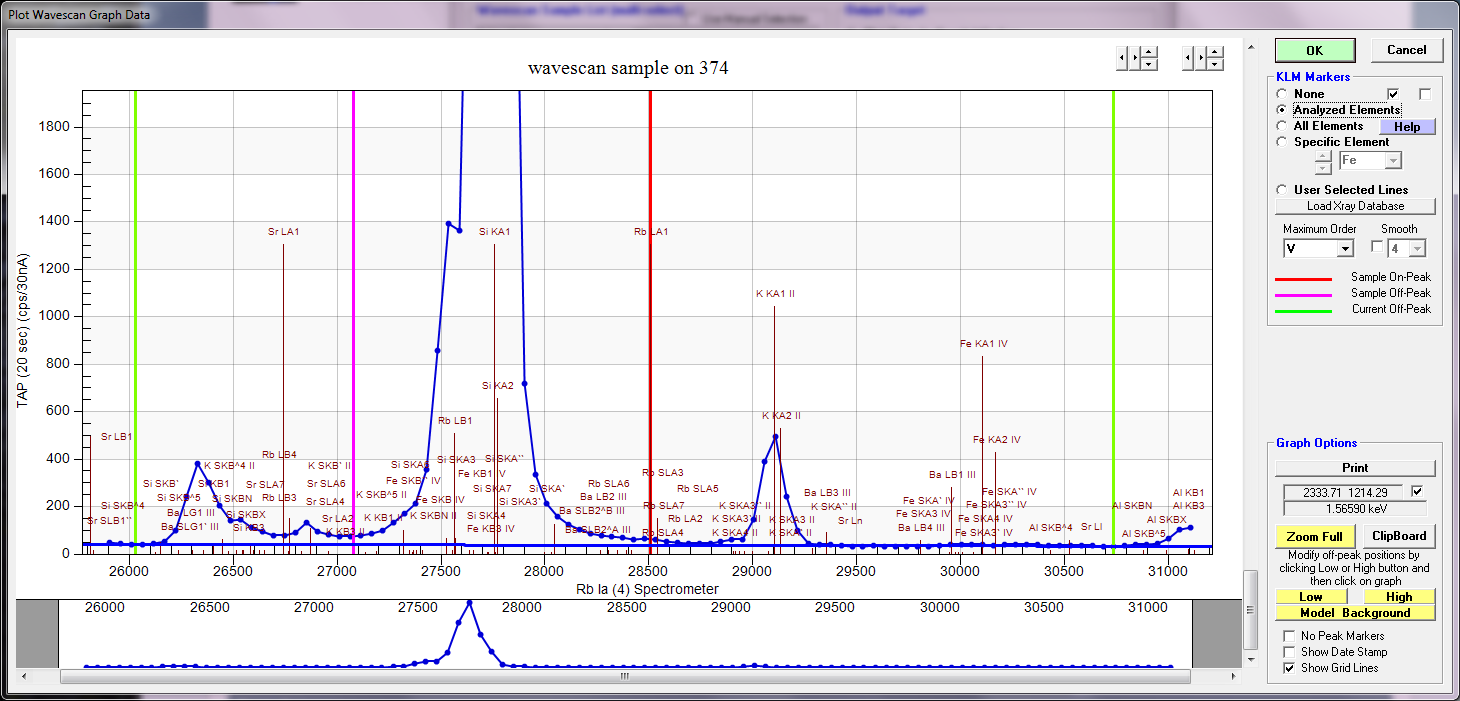I've decided to start discussing my attempts to analyze trace elements (Na, Ba, Rb, Sr and Fe) in an orthoclase matrix (Si, Al and K). For these attempts I'm using the MAD-10 orthoclase from CM Taylor because I have some trace element chemistry data on it. If anyone else has performed ICPMS or other bulk trace element methods on this material please feel free to post your data.
The composition of the MAD-10 orthoclase in my standard database is:
St 374 Orthoclase MAD-10
TakeOff = 40.0 KiloVolt = 15.0 Density = 2.590 Type = feldspar
Specimen from Chuck Taylor
Fe2O3=2.01% (EPMA by J. Donovan) (as FeO=1.88% + 0.13% O)
K2O=15.49%, Na2O=1.07% (Flame photometry by J. Hampel)
BaO=0.06%, Rb2O=0.03% (EPMA by J. Donovan)
Sr=12 ppm, Rb=600 ppm (Isotope dilution)
Oxide and Elemental Composition
Average Total Oxygen: 45.798 Average Total Weight%: 100.009
Average Calculated Oxygen: 45.671 Average Atomic Number: 11.991
Average Excess Oxygen: .127 Average Atomic Weight: 21.490
ELEM: SiO2 Al2O3 FeO K2O Na2O BaO Rb2O O
XRAY: ka ka ka ka ka la la ka
OXWT: 64.793 16.720 1.880 15.490 .910 .060 .030 .127
ELWT: 30.286 8.849 1.461 12.859 .675 .054 .027 45.798
KFAC: .2480 .0703 .0123 .1132 .0036 .0004 .0002 .1733
ZCOR: 1.2211 1.2594 1.1909 1.1361 1.8720 1.3740 1.2882 2.6422
AT% : 23.171 7.047 .562 7.067 .631 .008 .007 61.507
24 O: 9.041 2.750 .219 2.757 .246 .003 .003 24.000
My trust is in the Rb and Sr by isotope dilution performed many decades ago by John Christensen when he and I were at UC Berkeley. But I would be interested in other bulk efforts in characterizing these trace elements.
I'll post more later this week, but just to start things off here is a plot of the Rb La region using a TAP Bragg crystal.

Note that on PET the Rb La line is up against the high spectrometer limit, while on TAP, the emission line is almost to the bottom of the spectrometer range.
The mostly horizontal blue line is the background model using an exponential fit. I'm not sure I'm very happy with it.